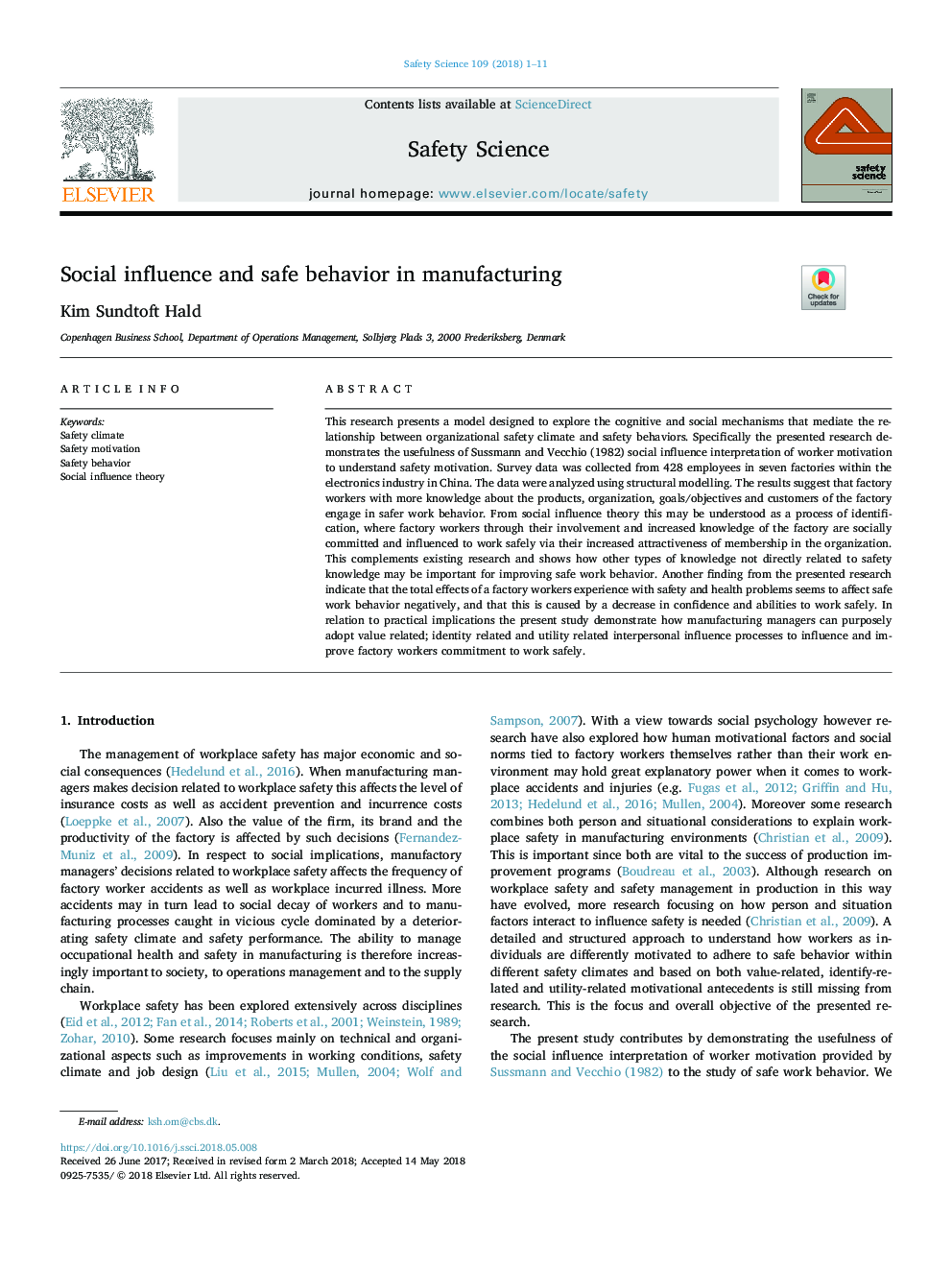| Article ID | Journal | Published Year | Pages | File Type |
|---|---|---|---|---|
| 6974657 | Safety Science | 2018 | 11 Pages |
Abstract
This research presents a model designed to explore the cognitive and social mechanisms that mediate the relationship between organizational safety climate and safety behaviors. Specifically the presented research demonstrates the usefulness of Sussmann and Vecchio (1982) social influence interpretation of worker motivation to understand safety motivation. Survey data was collected from 428 employees in seven factories within the electronics industry in China. The data were analyzed using structural modelling. The results suggest that factory workers with more knowledge about the products, organization, goals/objectives and customers of the factory engage in safer work behavior. From social influence theory this may be understood as a process of identification, where factory workers through their involvement and increased knowledge of the factory are socially committed and influenced to work safely via their increased attractiveness of membership in the organization. This complements existing research and shows how other types of knowledge not directly related to safety knowledge may be important for improving safe work behavior. Another finding from the presented research indicate that the total effects of a factory workers experience with safety and health problems seems to affect safe work behavior negatively, and that this is caused by a decrease in confidence and abilities to work safely. In relation to practical implications the present study demonstrate how manufacturing managers can purposely adopt value related; identity related and utility related interpersonal influence processes to influence and improve factory workers commitment to work safely.
Related Topics
Physical Sciences and Engineering
Chemical Engineering
Chemical Health and Safety
Authors
Kim Sundtoft Hald,
